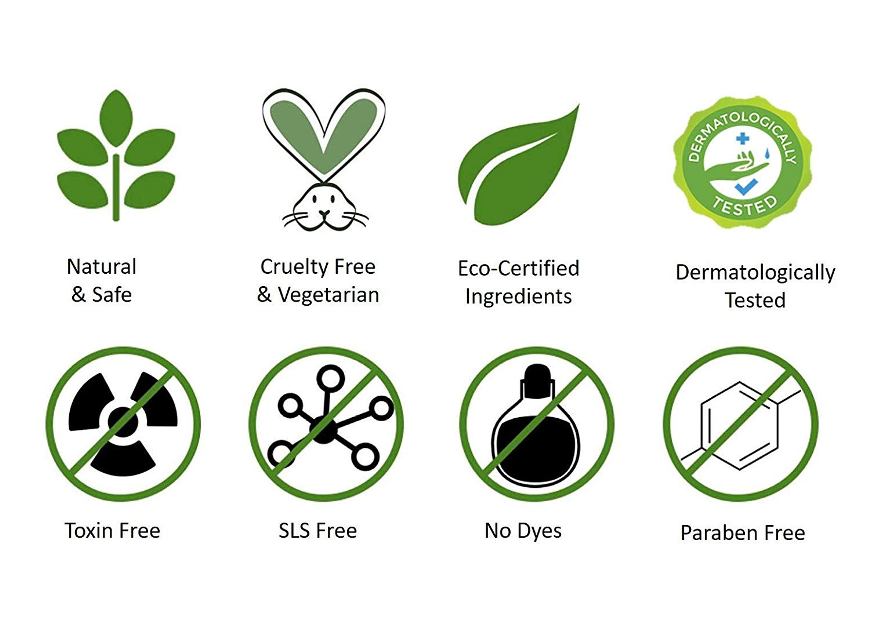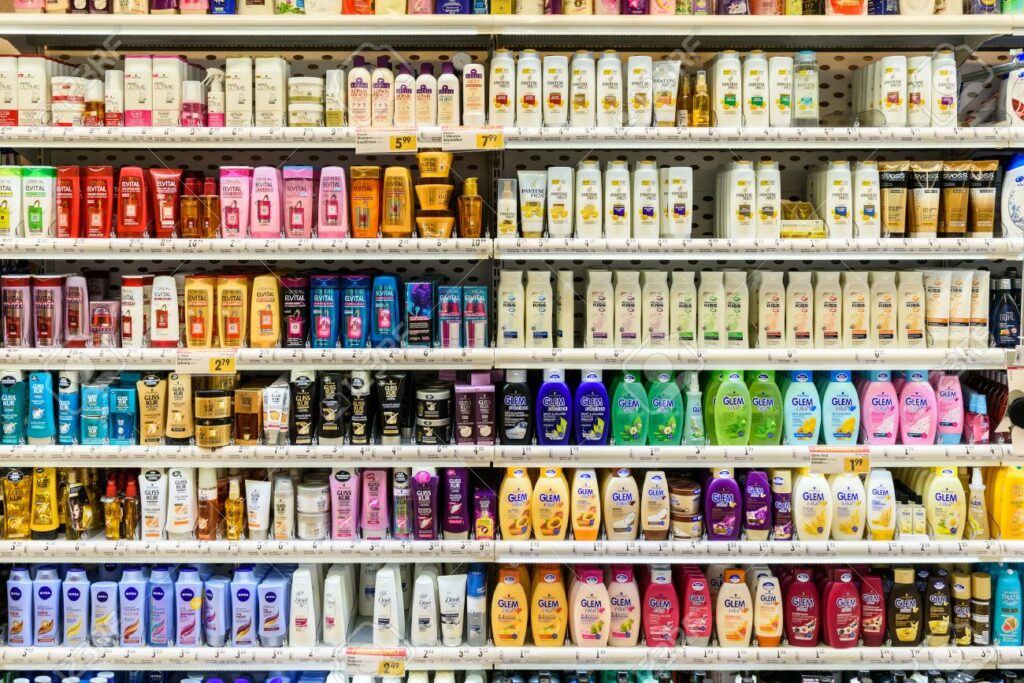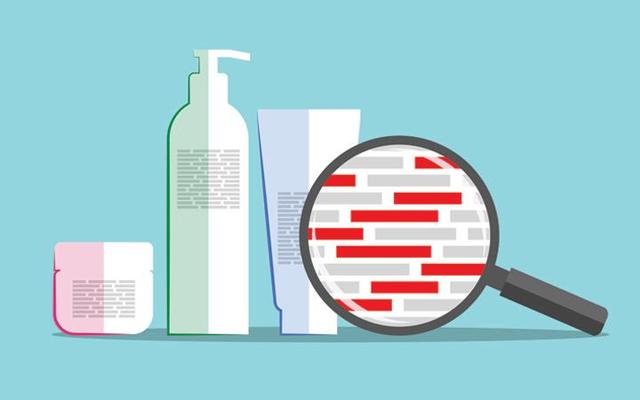By Evanthia Vasiliki Tagari,
Our skin is the largest and one of the most important organs of our body if one thinks that it protects other vital organs of it, such as muscles, ligaments, nerves, heart, etc. Beyond this condition, however, it is known that whatever is placed on our skin is absorbed up to 60% inside our body, which implies an obvious interaction, positive or negative, of external products with the “internal” health of our body. Many years of research have shown that diseases such as eczema, cancer, various allergies, hormonal disorders, and reproductive problems are directly related to dangerous materials that were hidden and continue to be hidden in “innocent” daily care products. This situation combined with the FDA (Food and Drug Administration) abstaining from controlling such products on the market makes their consumption even more dangerous.
The “Toxic Seven” list
But because our goal is to supply our body with nutrients and not to poison it through them, below are the “Toxic Seven” ingredients that can negatively affect our body and health.
1. Sodium Lauryl Sulfate (SLS) & Sodium Laureth Sulfate (SLES)
Found in: shampoos, shower gels, foundations, face soaps, mouthwashes, and toothpaste.
SLS and SLES have been shown to cause or contribute to skin irritation, as they disrupt the normal secretion of oils and can also irritate the eyes. They are also important factors in exacerbating acne as their use clogs the pores of the skin. Sulfates such as SLS and SLES are generally used to make foam —which is why they tend to discolor hair dye— in products, and come either chemically through a reaction with sulfuric acid, or of course from coconut oil or palm oil. Their effect is also negative for the environment as their rinsing seems to cause adverse survival conditions in aquatic organisms.
2. Parabens
Found in: makeup products, moisturizers, shaving gels, shampoos, lubricants, and tanning products in spray form.
Parabens are preservatives that are used to keep skin and makeup care products intact without the presence and growth of a germ host. Research shows that they cause increased production of the hormone estrogen (female sex hormone) and inhibit reproductive and brain function. In other words, parabens enter our skin and mimic the estrogens that cause excessive cell division in the breast. This eventually leads to breast cancer.

3. Synthetic colors
Found in: products with intense pigment such as lipstick, shadows, etc.
Synthetic paints come from oil or carbon tar. Carbon tar is made of hydrocarbons, coal, and water. It is a thick, dark and viscous liquid with a characteristic odor. The heavier the pigment of the product, the greater the chances of increased levels of carbon tar. Synthetic dyes can cause skin irritation, cancer, acne breakouts, and ADHD (Attention Deficit Hyperactivity Disorder).
4. Fragrance
Found in: moisturizers, deodorants, lotions, face creams, shampoos, and hair conditioners.
Perfume products are made with chemicals that are associated with respiratory disorders, skin allergies, dermatitis, and reproductive side effects. There is no strict ban on the use of perfume by companies nor is it required to disclose the ingredients of their perfumes. Perfumes are potentially carcinogenic substances that irritate and disrupt the body’s endocrine system. For this reason, it would be good to choose products without fragrance.
5. Triclosan and triclocarban
Found in: toothpaste, deodorants, and antibacterial soaps.
Triclosanes have an effective antibacterial character but at the same time, they can disrupt the endocrine system as well as irritate the skin. Some studies have suggested that triclosan may lead to inflammation of the gut and tumor growth in mammals. Triclosan decomposes slowly and is therefore considered a potential threat to the environment. Like sulfates, triclosan is also dangerous to aquatic organisms.

6. Dibutyl phthalate, toluene, and formaldehyde
Found in: nail polishes, perfumes, lotions, and emollients.
These chemicals, known as the “toxic trio”, have been linked to genetic abnormalities, endocrine disorders, headaches, and respiratory problems, and are of particular concern to hairdressers, nail salons, and those who often do personal use them. Pregnant women are advised to avoid nail products altogether. Non-toxic nail polish brands such as OPI and Zoya are committed to removing these chemicals from their products. Look for “non-toxic trio” products.
7. Aluminum
Found in: Almost every personal care product, especially antiperspirant deodorants.
Aluminum is a toxic metal that can mimic the action of estrogen, as well as parabens, resulting in disruption of the healthy functioning of our endocrine system.
Sustainable search and new opportunities
Unfortunately, the above list does not include every chemical compound that we should avoid in our everyday purchasing of products. The list is getting bigger and bigger as the studies daily increase all over the world. However, this list is not intended to scare us nor to prevent us from adopting a self-care routine. The goal is to acquire knowledge that can lead us to purchase more sustainably from markets that respect both our own bodies and the environment. Fortunately for us, many companies in the years 2021 have a sustainable philosophy for the products they provide in the trade-oriented well-being and prosperity inside and outside. These companies are there in the market and it would be good to discover them and give them opportunity and space in our lives to encourage other companies to look for quality materials friendly to humans, especially at a time when our lives are threatened by every aspect of our daily lives.
References
- Coconuts and Kettlebells, 10 Harmful Ingredients to Avoid in Makeup and Skincare Products, Available here
- Gerber, S., 12 Ingredients to Avoid in Makeup and Skincare Products, HelloGlow.co, Available here
- Odacite, The Dirty Dozen: Top 12 Ingredients to Avoid in Your Skincare, Available here
- Tamatan, S., 16 Toxic Chemicals To Avoid In Cosmetics And Skincare, SkinKraft, Available here




